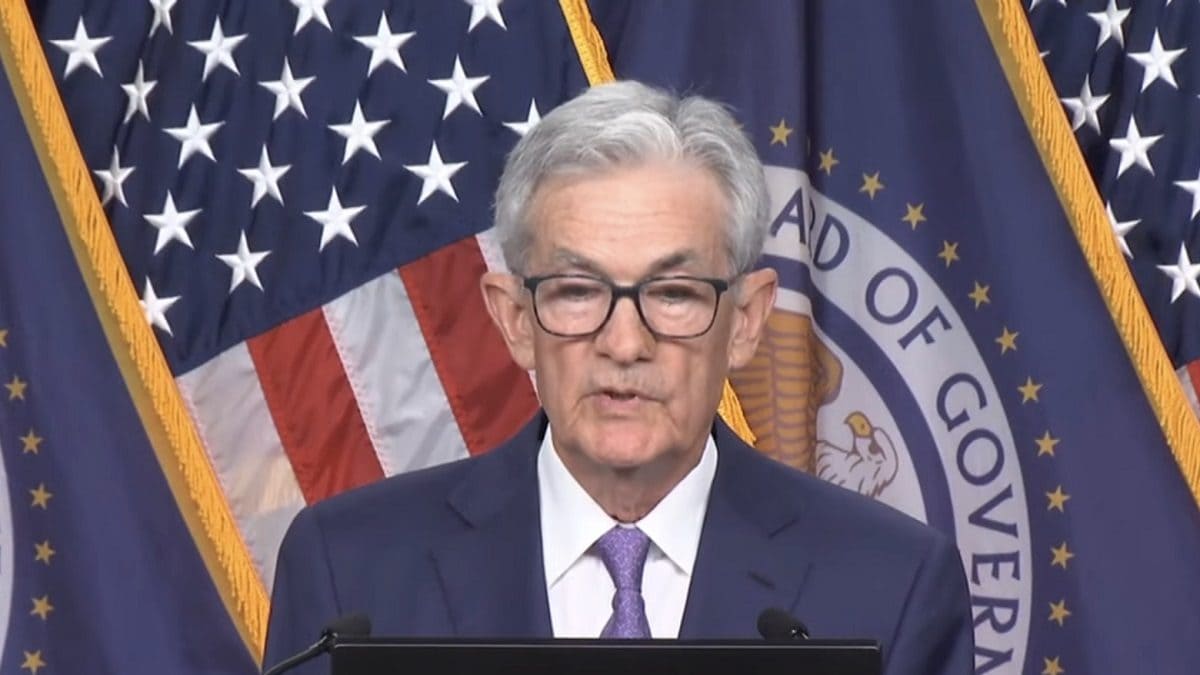The US Federal Reserve has cut its benchmark interest rate by an unusually large half-point, a dramatic shift after more than two years of high rates that helped tame inflation but also made borrowing painfully expensive for American consumers.
The rate cut, the Fed’s first in more than four years, reflects its new focus on bolstering the job market, which has shown clear signs of slowing. Coming just weeks before the presidential election, the Fed’s move also has the potential to scramble the economic landscape just as Americans prepare to vote.
The central bank’s action lowered its key rate to roughly 4.8 per cent, down from a two-decade high of 5.3 per cent, where it had stood for 14 months as it struggled to curb the worst inflation streak in four decades. Inflation has tumbled from a peak of 9.1 per cent in mid-2022 to a three-year low of 2.5% in August, not far above the Fed’s 2 per cent target.
The Fed’s policymakers also signalled that they expect to cut their key rate by an additional half-point in their final two meetings this year, in November and December. And they envision four more rate cuts in 2025 and two in 2026.
US Fed Chair Jerome Powell said, “The US economy is in a good place.. and our decision today is designed to keep it there.”
How Does it Impact Stock Market, Gold Prices, Crude Oil, Bonds?
Gold: A cut in rate generally tends to support higher gold prices due to factors like lower opportunity costs, a weaker dollar, inflation concerns and a shift in market sentiment. However, actual price behaviour may be uncertain and unstable because gold prices are subject to factors far beyond the reach of the US Federal Reserve.
After the US Fed decision, the gold prices in the international market hit record high. Immediately after the Fed hike on Wednesday, spot gold was up 0.9% at $2,592.39 per ounce in New York. US gold futures settled 0.2% higher at $2,598.60.
“History suggests that lower interest rates alone are not sufficient to push gold prices higher. A recessionary environment during the rate cuts is generally positive for Gold; however, rate cuts without a recession are generally not positive for gold,” said Unmesh Kulkarni, Managing Director Senior Advisor, Julius Baer India.
He added that the focus of the gold market has fully shifted away from Chinese investment demand and central bank buying to the outlook for interest rate cuts in the West. In the near-term, we remain constructive on Gold. Expectations of lower interest rates are propping up sentiment in the futures market and luring safe-haven seekers back into the physical market.
Stocks: Over time, US Fed rate cuts will lower borrowing costs for mortgages, auto loans and credit cards, as well as for business loans. Business spending could grow, and so could stock prices in the US. Companies and consumers could refinance loans into lower-rate debt. The higher spending is expected to boost the US economy, thus impacting the markets positively.
The Indian equity markets witnessing a gap-up opening on Thursday, with the benchmark NSE Nifty touching all-time high level. IT stocks, which have a high dependency on the US, opened in India at higher levels today.
However, Economic Affairs Secretary Ajay Seth said the US Federal Reserve’s decision to cut interest rates will not significantly impact inflows into India.
“It’s a 50 bps cut from high level so I don’t see that making any significant impact on the flows (into India). We have to see how things develop going forward,” Seth told reporters.
Oil: An interest rate cut in the U.S. generally weakens the U.S. dollar, as lower rates make holding dollars less attractive to investors. Since crude oil is priced in dollars globally, a weaker dollar makes oil cheaper for buyers using other currencies, which can increase demand for oil. Additionally, lower interest rates tend to stimulate economic growth, driving higher consumption of oil as industries expand and transportation needs rise. As a result, both increased demand and currency effects can contribute to a rise in crude oil prices following a U.S. interest rate cut.
Julius Baer India’s Unmesh Kulkarni said, “We are neutral on oil. Oil demand is expected to stagnate in the Western world and in China, while on the other hand, production is expanding, thanks to profitable operations. The petro-nations will likely eventually phase out their curtailments as competition for market shares heats up. Geopolitics-driven price spikes are usually short-lived, and in absence of an extreme flare-up in geopolitical conditions, the current downtrend in oil prices might just extend a bit more.”
Oil prices rose on Thursday after a large interest rate cut from the US Federal Reserve, but concerns over global demand lingered and capped gains. Brent crude futures for November were up 36 cents, or 0.5%, to $74.01 a barrel at 0618 GMT, while WTI crude futures for October were up 34 cents, or 0.3%, to $71.15 a barrel. The benchmarks recovered after falling in early Asian trade.
Bonds: The US Fed rate action is a pivot which is likely to boost money flow to emerging markets and lead to increased demand across asset classes. It may lead to a rate cut cycle in India, which will result in demand and price escalation of long-duration bonds, said Suresh Darak, founder & director of Bondbazaar.
(With Inputs from Agencies)


